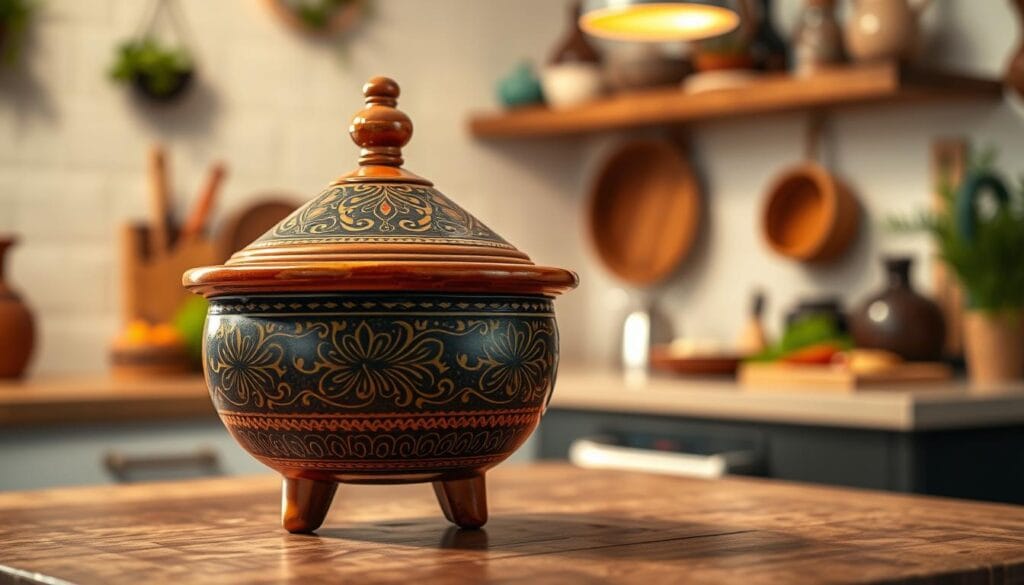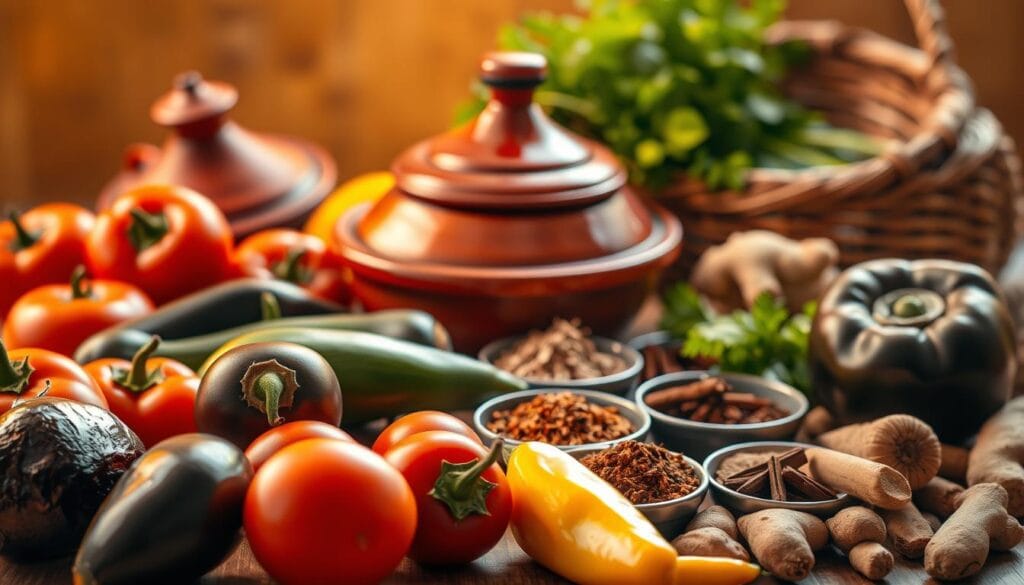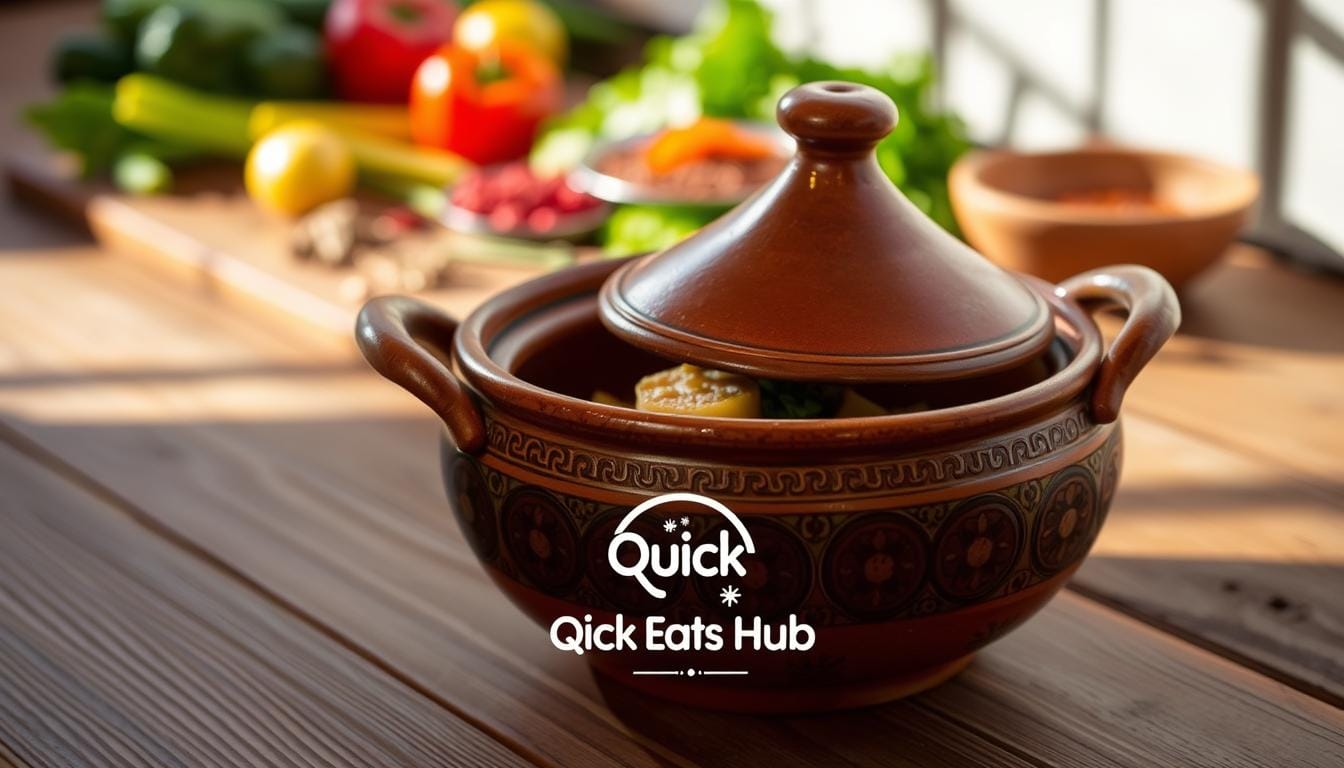Imagine the aroma of slow-cooked spices mingling with tender vegetables, creating a dish that feels like a warm embrace. Moroccan cuisine, with its vibrant flavors and rich history, offers a world of possibilities for those seeking hearty, wholesome meals. Today, we’ll explore how traditional vegetarian tagine recipes can be adapted to modern kitchens, blending authenticity with convenience.
These recipes are more than just meals; they’re a celebration of balance and flavor. By layering vegetables like carrots, potatoes, and squash, and infusing them with a blend of spices such as cinnamon, turmeric, and ras hanout, you create a dish that’s both nourishing and delicious. The addition of chickpeas adds protein, making it a satisfying option for any time of day.
Whether you’re using a traditional clay tagine or a Dutch oven, the slow-simmering process coaxes out the deepest flavors. A splash of lemon juice or a sprinkle of fresh parsley can elevate the dish, offering a bright, refreshing contrast to the rich spices. These vegetarian tagines are not just meals—they’re experiences, connecting you to a culinary tradition while catering to modern tastes and dietary preferences.
Table of Contents
Ready to dive in? Let’s start with a classic tagine recipe that’s been adapted for a vegetarian palate. Your kitchen—and your taste buds—will thank you.
Introduction to the Rich Tapestry of Moroccan Vegetarian Cuisine
Step into the heart of Moroccan culinary history, where the sizzle of spices and the aroma of slow-cooked tagines have shaped a cuisine that’s as vibrant as it is flavorful. For centuries, Moroccan cooks have perfected the art of blending simple ingredients with intricate spice combinations, creating dishes that tell stories of cultural exchange and tradition.
A Glimpse into Moroccan Culinary History
The tagine, with its iconic conical lid, is more than just a cooking vessel—it’s a symbol of Moroccan heritage. Designed to capture steam and lock in flavors, the tagine was born from the need to create nourishing, aromatic stews. Over time, it became a cornerstone of Moroccan cooking, especially for vegetarian dishes. Cooks like Fatima have mastered the art of layering vegetables and spices, crafting meals that are both hearty and elegant.
Cultural Influences and Timeless Traditions
Moroccan cuisine is a mosaic of influences—Berber, Arab, and Mediterranean traditions blend seamlessly, creating a unique flavor profile. At the heart of this culinary identity is the spice blend ras el hanout, a mix of up to 30 spices that adds depth to every dish. Local markets, bustling with fresh produce and aromatic spices, continue to inspire modern vegetarian recipes, proving that tradition and innovation can coexist beautifully.
Key Highlights:
- The tagine’s design reflects the ingenuity of Moroccan cooks, who valued flavor preservation and moisture retention.
- Ras el hanout and other spice blends are the backbone of Moroccan cuisine, offering a symphony of flavors in every bite.
- Modern kitchens have embraced the Dutch oven as a worthy substitute for the traditional tagine, keeping the essence of slow-cooked meals alive.
As you explore these timeless recipes, you’ll discover how Moroccan vegetarian cuisine balances simplicity with sophistication, making it a delight for every palate. Whether you’re using a clay tagine or a Dutch oven, the essence of Moroccan cooking remains unchanged—flavors that connect you to a rich history, one delicious stew at a time.
Moroccan Vegetarian Recipes for Your Modern Kitchen
Bringing the essence of North African cuisine into your home is easier than you think. With a few simple adaptations, you can enjoy the rich, bold flavors of traditional tagine dishes using everyday ingredients and tools.
Why a Tagine Brings Out Bold, Balanced Flavors
A tagine, whether it’s a traditional clay pot or a Dutch oven, is designed to lock in moisture and flavors. This slow-cooking method allows vegetables like carrots, potatoes, and squash to simmer gently, absorbing the deep, aromatic spices. The result is a stew that’s both hearty and refined, perfect for a satisfying meal.

Using a Dutch oven as a substitute for a clay tagine is a practical solution for modern kitchens. It still delivers that signature slow-cooked flavor, making it easy to achieve an authentic taste without special equipment.
The Role of Spices: Ras el Hanout, Cinnamon, and More
Ras el hanout, a blend of up to 30 spices, is the backbone of these dishes, adding warmth and depth. Cinnamon, ginger, and a touch of harissa create a harmonious balance between sweet and savory notes. Layering these spices with vegetables and chickpeas ensures every bite is flavorful and satisfying.
- Layer ingredients like potatoes, carrots, and squash for even cooking.
- Adjust heat levels to maintain a gentle simmer, allowing flavors to meld over time.
- Finish with fresh herbs like parsley or cilantro for a bright, refreshing touch.
These adaptable recipes fit seamlessly into modern dietary preferences, offering a delicious way to explore North African flavors at home.
Mastering the Tagine Technique and Flavor Foundations
Discover the art of slow-cooking with a Dutch oven, a perfect stand-in for a traditional clay tagine. This versatile pot locks in moisture and flavors, essential for creating rich, aromatic stews.
Prepping Your Dutch Oven and Essential Tools
Start by preheating your Dutch oven on low heat for 5-10 minutes to prevent cracking. A light coating of olive oil inside ensures even cooking. For a traditional touch, season your pot beforehand with olive oil and heat it in the oven for about an hour.
Layering Vegetables and Simmering to Perfection
Begin with root vegetables like potatoes and squash at the bottom, as they need more time to cook. Add chickpeas, garlic, and onions in the next layer. Sprinkle ras el hanout and a pinch of cinnamon for depth. Drizzle olive oil over the top and pour in a cup of broth to keep things moist.
Cover and simmer on low heat for about 45 minutes. Stir occasionally to ensure even cooking. Finish with fresh parsley and a squeeze of lemon juice for a bright, refreshing touch. Let it rest for 10 minutes before serving.
Essential Ingredients and Time-Saving Cooking Tips
Creating a delicious tagine is all about balancing flavors and textures. With a few key ingredients and smart techniques, you can craft a hearty stew that’s both authentic and easy to make.
Step-by-Step Ingredient Preparation and Cooking Instructions
Start by prepping your vegetables. Chop 2 large carrots, 2 stalks of celery, and 1 medium onion. Mince 2 cloves of garlic and measure out 1 teaspoon of ground cumin. These form the base of your stew.

In a Dutch oven or clay tagine, heat 2 tablespoons of olive oil over medium heat. Add the onions and garlic, sautéing until fragrant. Next, layer in your chopped vegetables, starting with harder ones like carrots and celery. Sprinkle with spices like turmeric, paprika, and a pinch of cinnamon for depth.
Pour in 4 cups of vegetable broth and add 2 cans of chickpeas. Bring the mixture to a gentle simmer, then reduce the heat to low. Cover and let it cook for 45 minutes, stirring occasionally to ensure even cooking. Finish with a squeeze of lemon juice and a sprinkle of fresh parsley for brightness.
Adaptable Variations and Substitution Ideas
| Ingredient | Substitution | Why It Works |
|---|---|---|
| Butternut Squash | Any Winter Squash | Maintains texture and absorbs flavors well |
| Chickpeas | Red Lentils | Adds protein and thickens the stew |
| Tomato Sauce | Fresh Tomatoes | Provides acidity and freshness |
These substitutions allow you to experiment without losing the dish’s essence. Adjust spices like cumin or paprika to suit your taste, ensuring each bite remains flavorful and balanced.
By following these steps and tips, you can create a mouthwatering tagine that’s both nourishing and delicious. Whether you’re a seasoned cook or a beginner, this recipe offers flexibility and flavor in every step.
Conclusion
As you conclude your journey through the vibrant world of Moroccan-inspired vegetarian cooking, remember that the heart of these dishes lies in their balance of tradition and innovation. Whether you’re using a clay tagine or a Dutch oven, the slow-cooking method ensures that every vegetable and spice melds together into a rich, satisfying stew. Chickpeas add protein, while a cup of broth and a touch of ground spices like cumin and cinnamon enhance the depth of flavor.
Don’t hesitate to experiment with ingredient substitutions, like swapping squash for another winter vegetable, to keep your creations fresh. Proper layering and gentle heat management are key to achieving that perfect simmer. The result? A hearty, aromatic tagine that honors its culinary roots while fitting seamlessly into your modern kitchen.
Now, it’s your turn to bring this culinary adventure to life. Share your creations and variations on social media, and don’t be afraid to add your own twist to these time-tested recipes. With every pot you simmer, you’re not just cooking a meal—you’re connecting with a tradition that spans centuries. So, take a moment to savor the flavors, and let the spices inspire your next culinary masterpiece.

